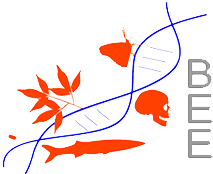the new york times.it, 15/9/2014 – CARINA STORRS
When Harsh Bais grows rice plants in trays of water in his greenhouse at the University of Delaware, he can easily spot the ones that have been exposed to arsenic: They are stunted (http://www.ncbi.nlm.nih.gov/pubmed/23771154) , with shorter stems and shrunken, yellow-tinged leaves.
Dr. Bais is working to develop rice plants that take up less arsenic, a common contaminant in the fields of his native India and other Asian countries. Chronic exposure to arsenic has been linked to heart disease, diabetes and genetic damage associated with elevated risk for cancer.
But instead of trying to breed new strains of rice or alter its DNA, he and other scientists have set out in a surprising new direction. They are looking at the vast and untapped microbial community that lives near the rice’s roots (http://www.ncbi.nlm.nih.gov/pubmed/23790204 )
These bacteria are the botanic equivalent of the human microbiome — the trillions of organisms that live in our guts, many performing beneficial tasks like digesting food and fighting off infection. [...] http://www.nytimes.com/2014/09/16/science/going-inside-the-rice-microbiome.html?ref=science&_r=0






Università di Tor Vergata